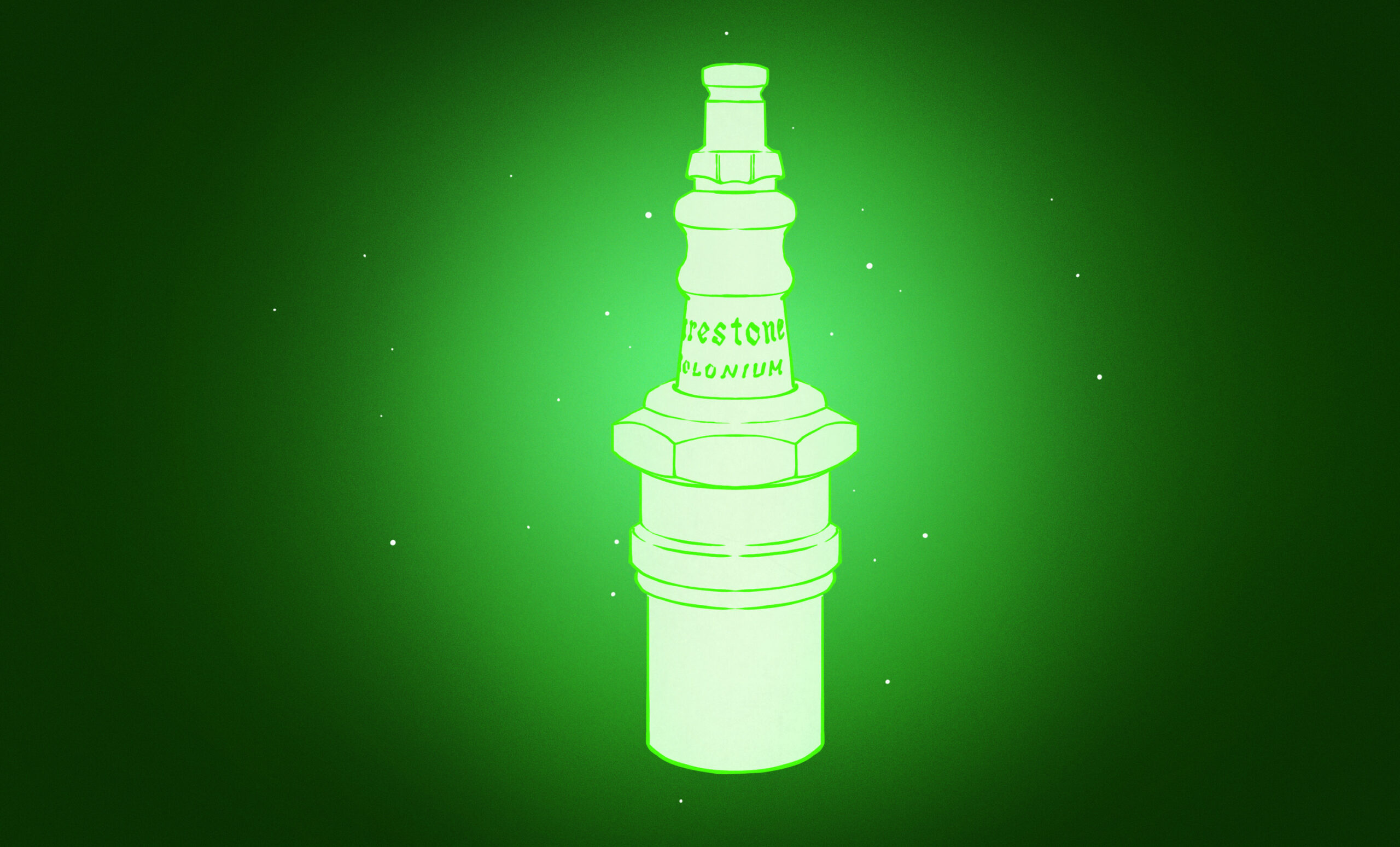In the early 20th century, the fascination with atomic energy led to unconventional innovations, including the use of radioactive materials in everyday products. One of the most intriguing examples is the spark plug developed by the Firestone Tire and Rubber Company, which incorporated small amounts of polonium-210 to enhance engine performance. These polonium-infused spark plugs emerged around 1940 but quickly faded from the market by 1953.
The concept behind the Firestone Polonium spark plug was rooted in the optimistic spirit of the Cold War era, where nuclear technology was viewed as a solution to various engineering challenges. Firestone believed that as polonium-210 decayed into lead, it would emit alpha particles that could ionize the air-fuel mixture in a vehicle’s combustion chamber. This ionization was intended to create a more efficient spark, improving ignition and reducing the risk of engine misfires.
The origins of this idea trace back to Albert Hubbard, who applied for a patent in 1924 regarding the use of radium to enhance spark plug performance. His patent, US 1,723,422, was granted in 1929. Firestone later filed its own patent, US 2,254,169, in 1941, opting for polonium-210 over radium due to concerns about cost and safety. The company asserted that polonium provided a more effective means of achieving the desired ionization.
According to Firestone’s patent, incorporating the radioactive material into the electrodes was crucial for its intended function. The design aimed to optimize the spark gap, thereby facilitating the necessary ionization for improved combustion. Firestone claimed that tests demonstrated a 30% reduction in engine revolutions needed for starting when using polonium spark plugs in cold conditions, such as those at -15° F.
Despite the initial enthusiasm, the lifespan of these spark plugs was limited. Polonium-210 has a half-life of only 138 days, meaning that within a year, approximately 84% of the radioactive material would have decayed. This short lifespan raised questions about the plugs’ effectiveness by the time they reached consumers. Furthermore, any performance advantages touted by Firestone might have been diminished by deposits accumulating on the electrodes over time.
The radioactive spark plugs were advertised until around 1953, but they did not gain lasting popularity. The potential drawbacks related to the handling, storage, and disposal of radioactive materials likely hindered wider adoption. As a result, these innovative products quickly vanished from the automotive market.
Today, examples of polonium-impregnated spark plugs can still be found on online auction sites, although the radioactive material within has long since decayed. While these plugs may not exhibit any significant radioactivity now, they serve as a reminder of a unique period in automotive history when the allure of nuclear power inspired bold engineering experiments.
The story of Firestone’s radioactive spark plugs highlights both the innovative spirit of the time and the practical limitations of applying advanced scientific concepts in everyday applications. In retrospect, it is perhaps fortunate that these products did not become mainstream, given the challenges associated with radioactive materials.
